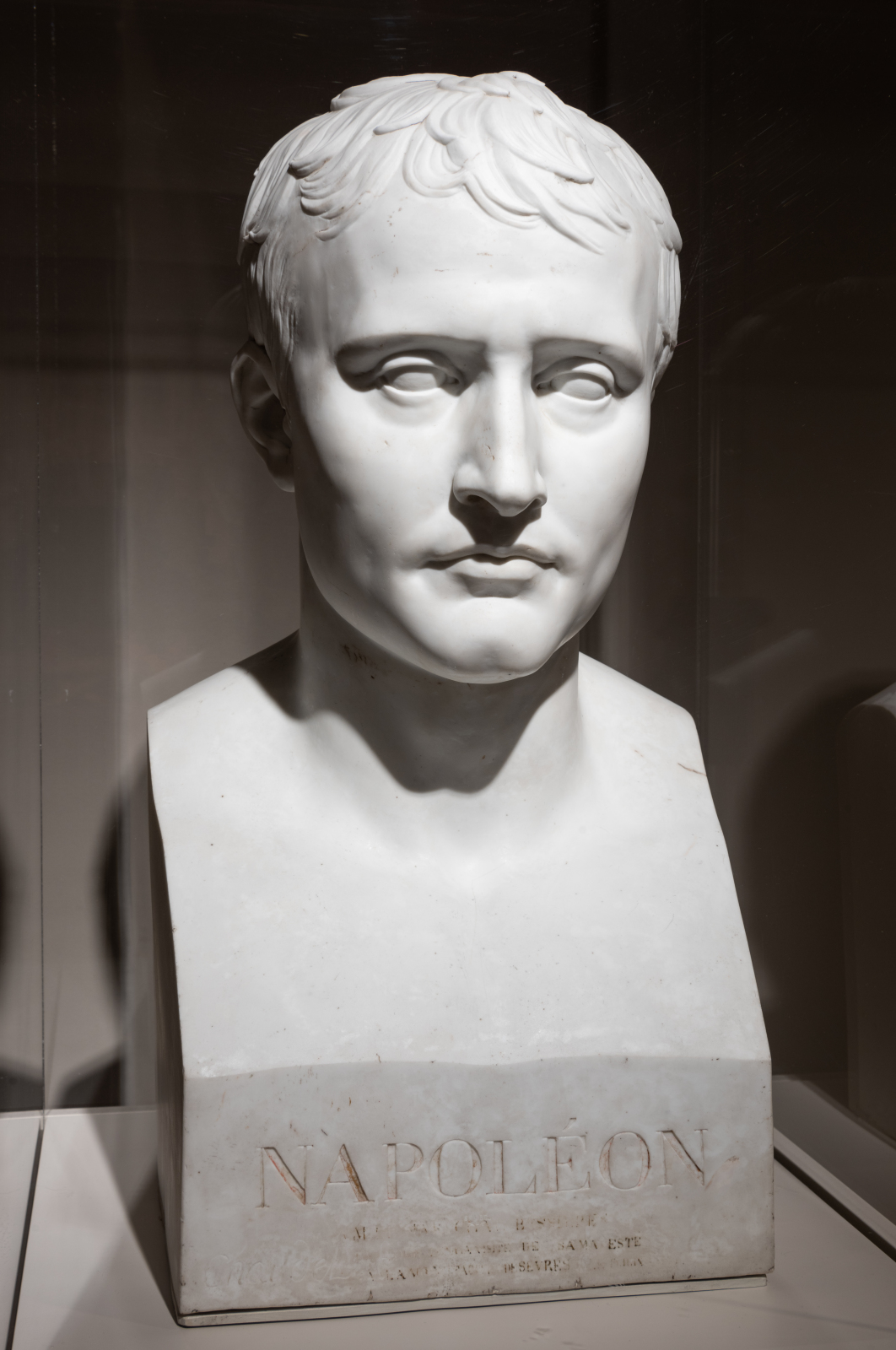 Photo: David Stover © Virginia Museum of Fine Arts. Gallery views of Napoleon: Power and Splendor, June 9, 2018 – September 3, 2018
Photo: David Stover © Virginia Museum of Fine Arts. Gallery views of Napoleon: Power and Splendor, June 9, 2018 – September 3, 2018
Napoleon Bonaparte, one of modern history’s most interesting and controversial figures, was replete with contradictions, leaving behind a legacy of notable and lasting achievements as well as millions of casualties and widespread devastation resulting from his military campaigns. It’s for these reasons, that VMFA’s current exhibition, Napoleon: Power and Splendor, is not a glorification of the life and history of Napoleon as a hero but rather a focus on the propaganda and artwork that was commissioned to propel and legitimize his audacious and surprising rise to power.
Fiction
- Little Boney
Napoleon was many things, but uncommonly short was not one of them. Napoleon was 5’6”–5’7” (168-170 cm) tall, which was about average for the time period. This myth of shortness was generated by English propagandists, who referred to Napoleon as “little Boney” and depicted the general as comically short in political cartoons during the Napoleonic Wars (Selin). - Escape from Saint Helena
The myth that Napoleon was replaced on Saint Helena by a body double named François-Eugéne Robeaud first appeared in print in 1911. Robeaud, allegedly impoverished and living in the French village of Baleycourt, was said to have disappeared sometime in 1818 after reportedly being visited by General Gaspard Gourgaud, one of Napoleon’s former companions on Saint Helena. There is no evidence that Robeaud ever existed or that he replaced Napoleon. Nor is there any evidence suggesting that Napoleon ever left the island (Selin). - Arsenic Poisoning
Many theories have suggested that Napoleon was poisoned with arsenic due to the arsenic levels present in his hair taken at the time of his death. However, hair samples from several of his contemporaries indicate that the levels are average for the era. In actuality, Napoleon died from pervasive cancer that ravaged his entire stomach and lymph nodes. This cause of death was determined by a team of British surgeons and his personal doctor in a post-mortem autopsy performed in the billiards room the day after his death (Roberts 796-798).
Fact
- My Good Dear Eugénie
Besides being a military leader, statesman, and reformer, he was also a writer. In the autumn of 1795, at the age of 26, he wrote a romantic novella of about seventeen pages in length titled Clisson et Eugénie, which was based on his brief engagement with Désirée Clary (the future Queen of Sweden). In a letter to his beloved Désirée, he confided that “writing was both his greatest pleasure and the most imperative need of his soul” (Roberts 57). The story was near and dear to his heart and underwent countless rounds of drafting and editing. The novella was first translated and published in English in 2009. - A Rose by Any Other Name
Napoleon had a penchant for changing names. He was born Napoleone di Buonaparte in 1769, and by 1796 he had Gallicized his name to Napoléon Bonaparte, “emphasizing his French characteristics over his Italian and Corsican identities” (Roberts 73). He is also responsible for dubbing his first wife, Marie-Josephe-Rose de Beauharnais, simply as “Josephine.” Although the two were not a perfect match, they had many things in common in their roles as “outsiders, immigrants, islanders and ex-political prisoners.” (Roberts 71). - Don’t Look a Gift Horse in The Mouth
In 1797, Napoleon seized the four famous bronze Horses of Saint Mark (Cavalli di San Marco), from the facade of Saint Mark’s Basilica in Venice. They were taken back to Paris where they were used in the design of the Arc de Triomphe du Carrousel. The horses were returned to their original place in Saint Mark’s in 1815 by order of Francis I, Emperor of Austria and former Holy Roman Emperor as well as the father of Napoleon’s second wife, Marie Louise (Grabar, Muraro).
Bibliography:
Bonaparte, Napoleon. Clisson and Eugénie: A Love Story. London: Gallic Books, 2009.
Grabar, André and Muraro, Michelangelo. Treasures of Venice. Geneva, Switzerland: Editions d’Art Albert Skira, 1963.
Roberts, Andrew. Napoleon: A Life. New York: Penguin Random House, 2015.Selin, Shannon (Author of Napoleon in America). “10 Myths About Napoleon Bonaparte.” Shannon Selin, shannonselin.com/.